Splish-splash. Splish-splash.
No visit to The Children's Museum is complete without taking a moment to gaze at the Water Clock that stands tall in the Sunburst Atrium. It's a time-honored tradition.
No pun intended.
A unique timepiece
Did you know that the Water Clock is a whopping 26 ½ feet tall? At the time of this writing,it is the largest water clock of its kind in North America. It’s made up of more than 40 glass pieces—29 small disc-like globes that mark two-minute intervals, 12 larger globes that keep track of the hours—100 metal pieces, at least 70 gallons of a water/methyl alcohol/blue dye mixture.
It’s a sight to behold.
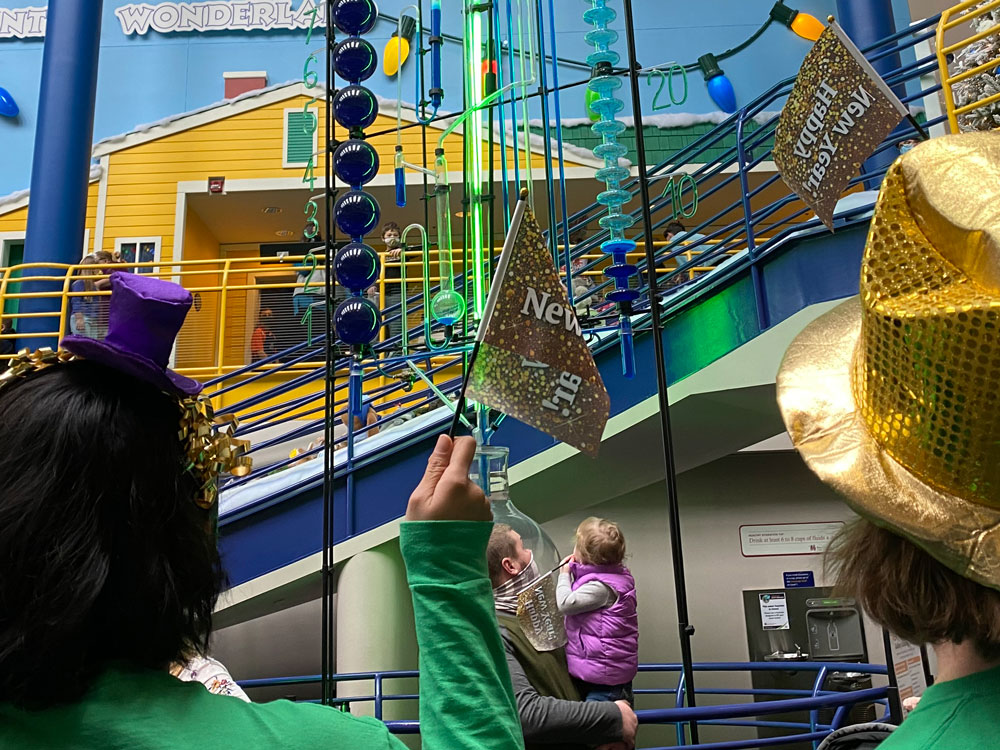
Every day, you’ll find families, school groups, and visitors of all ages gather around this towering timekeeper, gazing in amazement as the minutes drip away. Young children use it to practice counting. Older children and grown-ups discover the wonders of physics. It’s the focal point of our Countdown to Noon celebrations on New Year’s Eve. Families have been inspired to make their own Water Clock. Couples have even gotten engaged in front of it.
The Water Clock is an icon at The Children’s Museum. It’s inspired countless memories throughout the years.
From France to the Hoosier heartland
Water clocks have been around for thousands of years. There’s historical evidence of their use in ancient Egypt, India, and Greece. But none can match the accuracy or innovation of the water clocks created by French physicist-turned-artist Bernard Gitton. His towering clocks can be found in major cities around the world, including Paris. Belin, Tokyo, Rio de Janeiro—and right here in Indianapolis.
When Peter Sterling—our fourth president— encountered one of Gitton’s water clocks in Brazil in the 1980s, he was struck by its beauty and scientific genius. Gitton had worked for almost five years to perfect the design of his first water clock. Mr. Sterling asked the artist/inventor to create something similar for our facility.
He agreed.

Gitton designed the Water Clock in his studio in France. Thousands of mathematical calculations were made to determine the size of each minute disc, hour sphere, and the length of each pipe.
Designing the Water Clock wasn’t as complicated as constructing it to its precise specifications. Gitton supervised the creation of each hand-blow glass globe, disc, and tube. When all of the parts were ready, he assembled and tested the clock in France. Then he took it all apart and shipped it to Indianapolis. Gitton brought two assistants with him to reassemble the Water Clock here in Indianapolis. It has wowed visitors since its installation in 1988.
How does the Water Clock work?
Before we get into the technical aspects of the Water Clock, it is important to note that the best way to understand how our Water Clock works is to attend the always-popular live interactive program in the Sunburst Atrium called Atrium Show: Water Clock. It takes place every day and is included with museum admission and with museum membership. They do a masterful and entertaining job explaining how the Water Clock works. With that being said, we’ll do our best to explain it here, too.
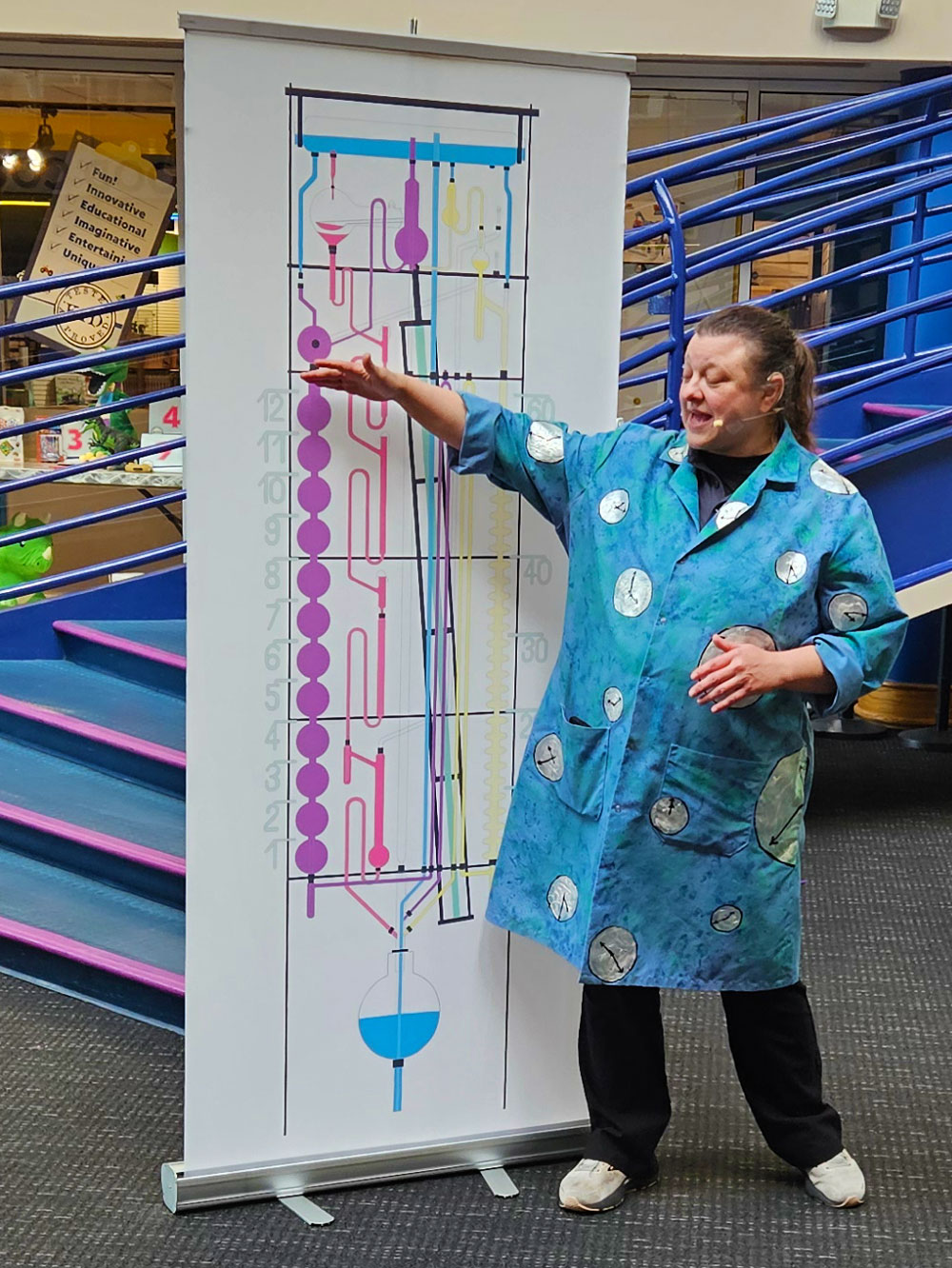
The Water Clock works on three basic principles of physics:
-
- Energy cannot be destroyed, only changed
- Gravity pulls objects down to the lowest possible level
- Water seeks its own level
Initially, an electric water pump beneath the floor moves the water to the top reservoir. From there, it flows into a glass cupel—a shallow cup or scoop—attached to a green neon pendulum. As the cupel fills, its weight increases (thanks, gravity!). As the weight increases,its arm starts to dip and empties the liquid.
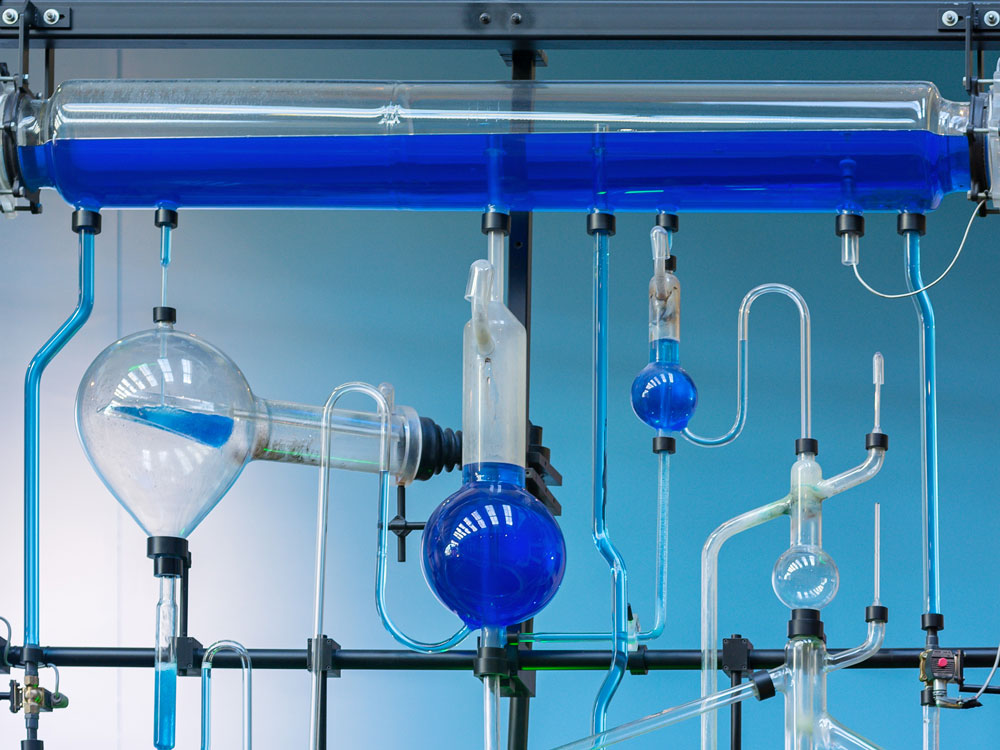
The cupel then returns to an upright position, thus propelling the pendulum. This occurs every two seconds, keeping a steady stream of liquid flowing into the clock’s systems of curved pipes and siphons. Every hour, the minutes column empties. This creates a vacuum that draws liquid into the hours column, filling one of the hour spheres.
Together, the number of filled spheres lining the hours side of the clock and the number of filled discs on the minutes side tell us the time of day.
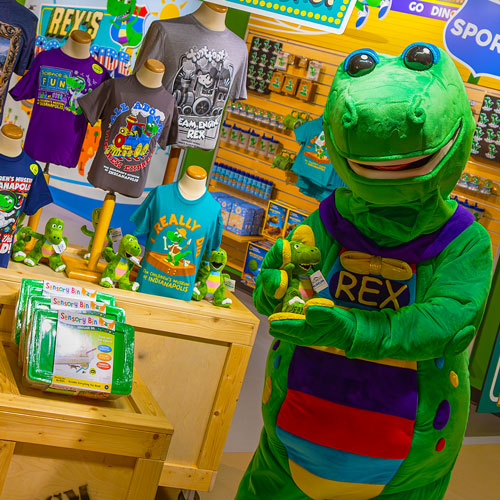 Looking to dig deeper into scientific concepts like gravity, energy, and measuring things like time and temperature? The Museum Store has fun and educational experiments, projects, and kits available! You can visit the store in person, online, or arrange a virtual shopping experience!
Looking to dig deeper into scientific concepts like gravity, energy, and measuring things like time and temperature? The Museum Store has fun and educational experiments, projects, and kits available! You can visit the store in person, online, or arrange a virtual shopping experience!
100% of all profits from The Museum Store go to furthering the mission of The Children's Museum!
There are only 29 of these minute discs, representing 58 minutes. The missing two minutes are accounted for in the time it takes for the pipes to drain. Just before 1 p.m. (and 1 a.m.), the minutes and the hours sections are full. When they overflow they create a siphon that empties the entire clock and…
WHOOSH!
Then the whole process starts all over again. This cycle happens every 12 hours—at 1 p.m. and 1 a.m. The only people who can watch the Water Clock empty at 1 a.m. are our overnight security team. They assure us that it does, in fact, happen every night.
Fun and fascinating facts
Here are a few fun and fascinating facts about our Water Clock:
- Methyl alcohol is mixed with the water to prevent algae and fungus from growing inside the pipes
- The water-to-alcohol ratio is 50/50
- Because the water/alcohol mixture is clear, we add blue dye to the water so it is easier for us to read the water levels and see what time it is—it only takes one drop of dye to turn all 70 gallons blue
- During the summer months, up to 20 gallons of water evaporate from the Water Clock each month—sensors at the 30-minute and 6-hour marks detect the clock’s water level and a computer automatically adds and lowers water as-needed
- That computer is also used to adjust the Water Clock when we spring forward or fall back—the whole process takes 10–20 minutes
- How do we clean the Water Clock? With a scissor lift and a duster—we use a similar duster to clean our Fireworks of Glass by Dale Chihuly—but that’s a little bit more complicated
Wonder at the Water Clock in person
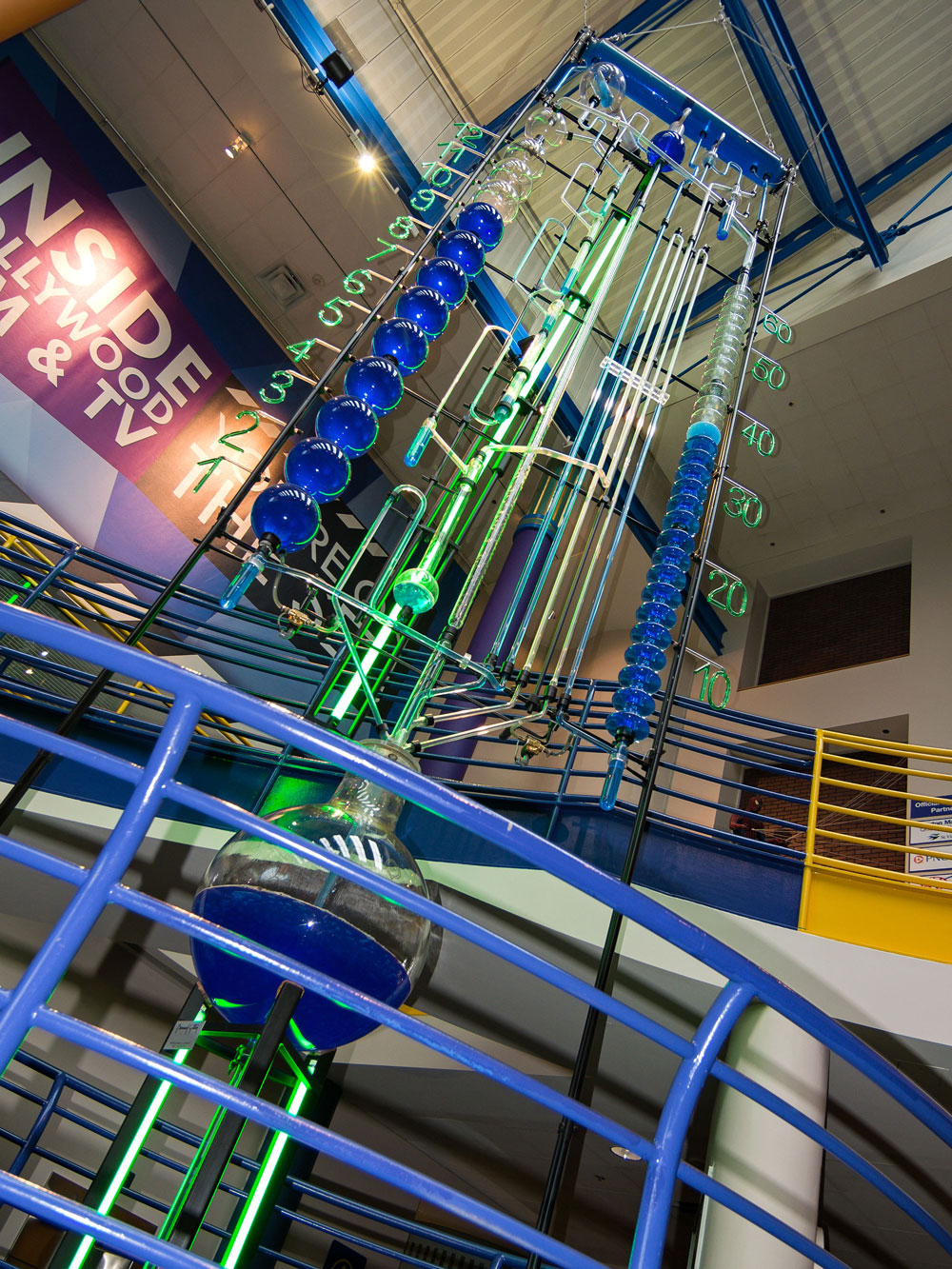
The next time you visit us at The Children's Museum, take a few minutes (or longer) to gaze into the maze of glass as the seconds tick drip away. Marvel at its ingenuity. Examine its intricacy. Wonder at its creativity. Who knows? This stop could spark a passion or inspire an idea.
Time waits for no one, but the Water Clock is waiting here for you.

 (
(











